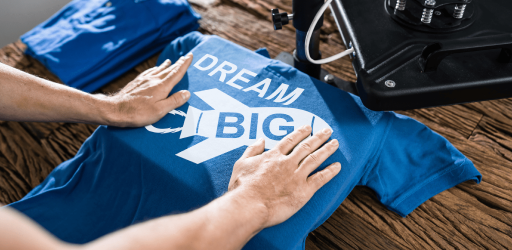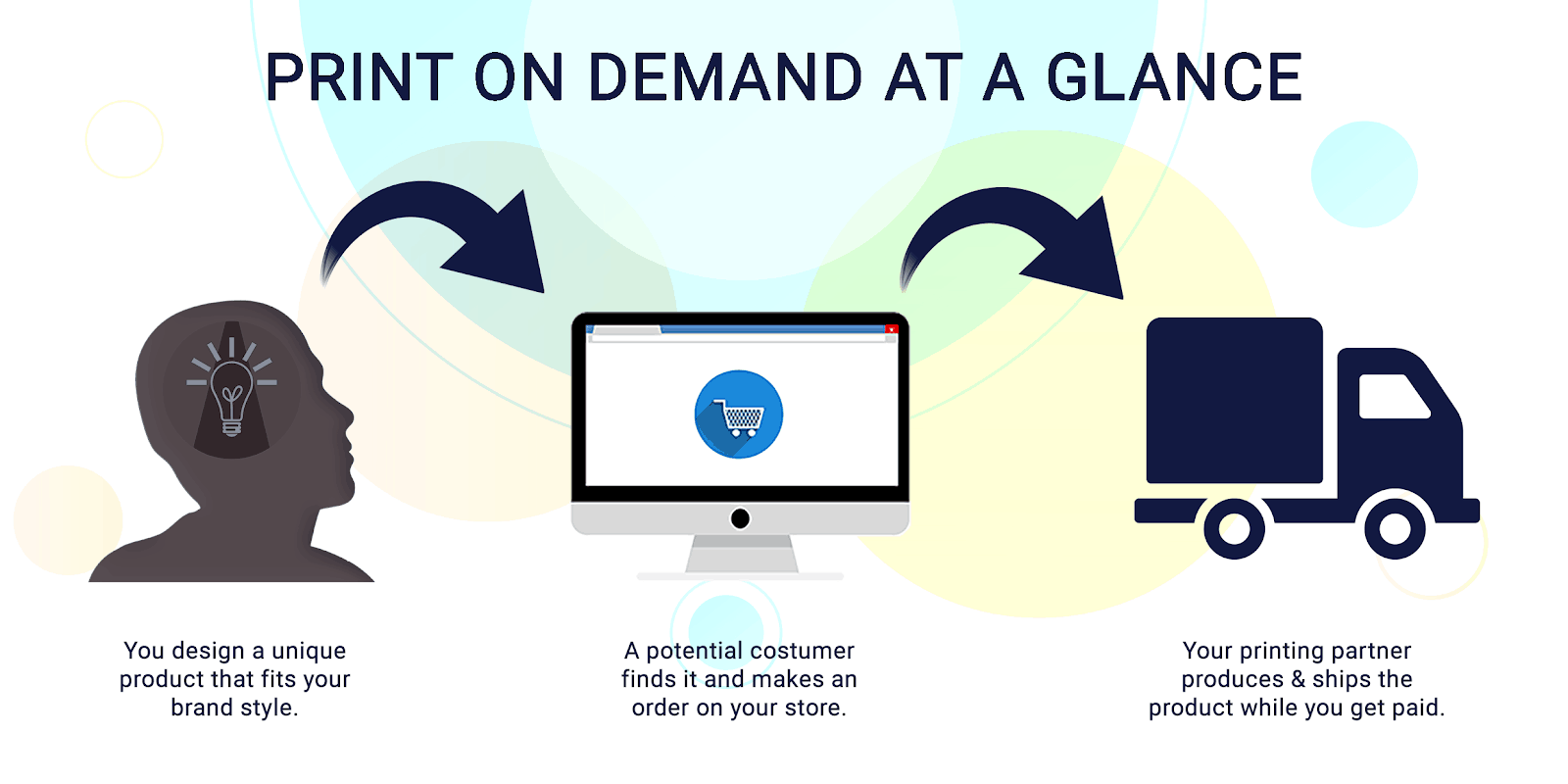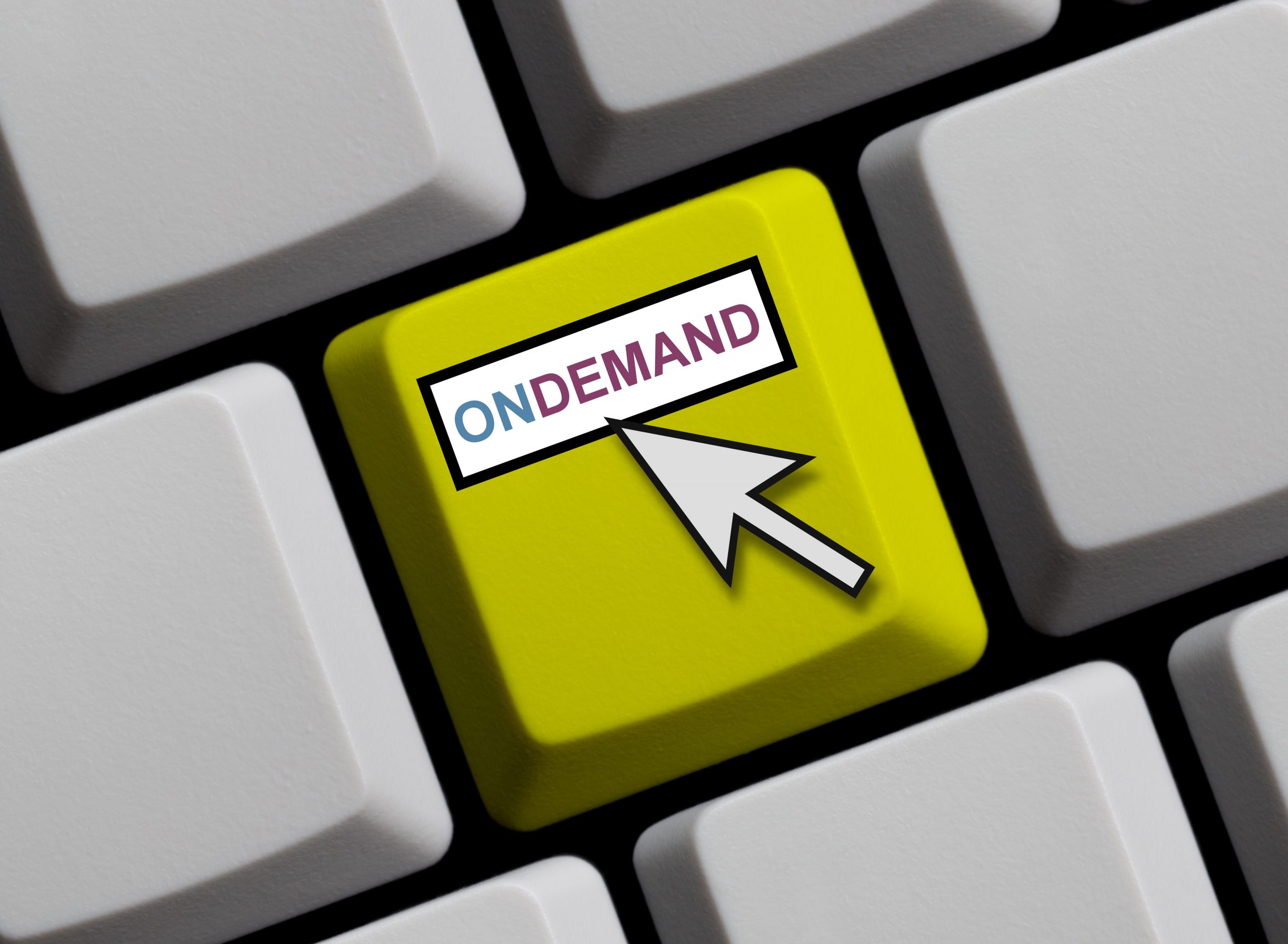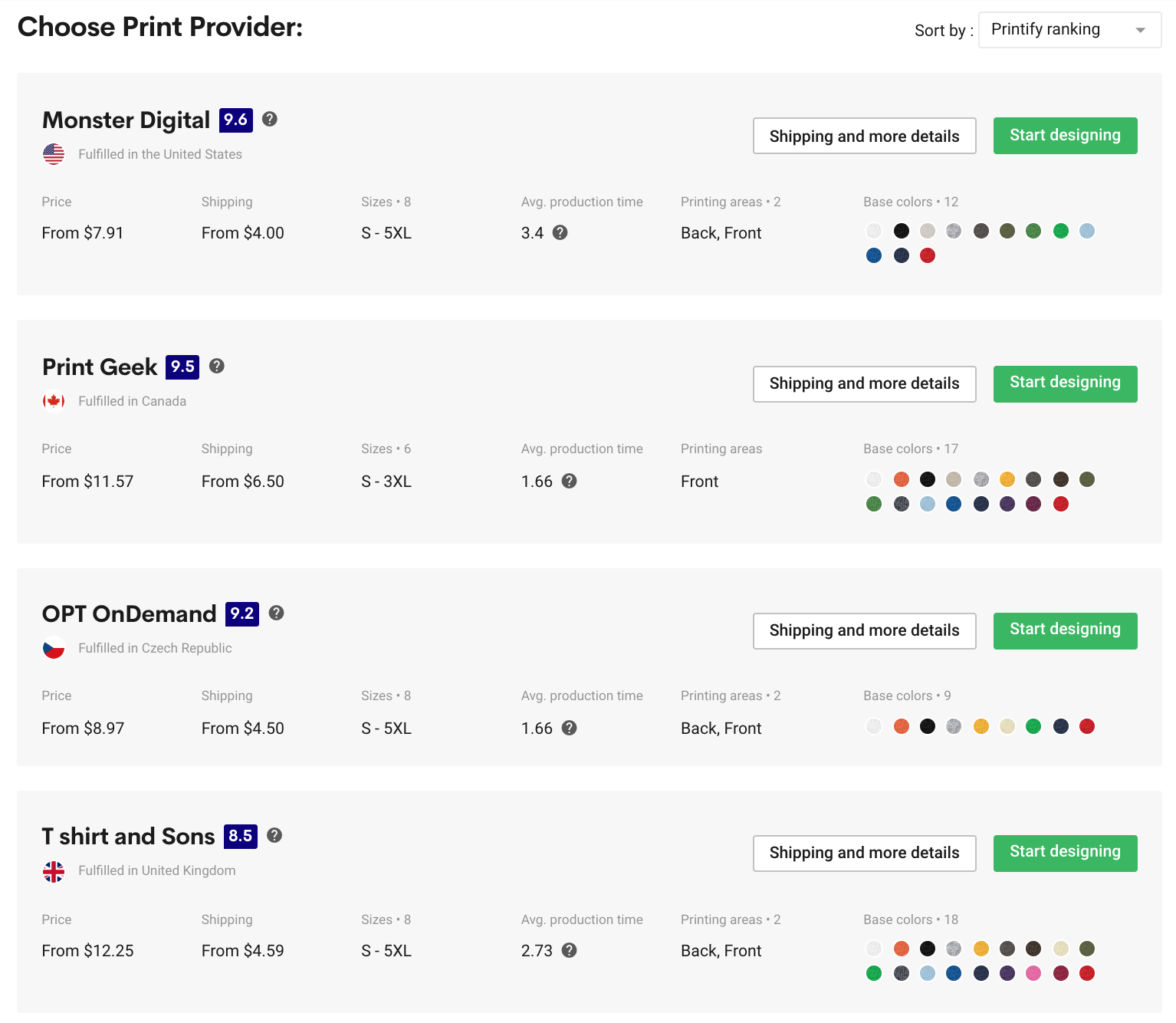How to Make a Living Without a Job: The Print on Demand Way


For many, the ultimate goal is to make a living by working from home. Armed with a laptop and a desire to be your own boss, with the right help, support, and desire, you really can make a living without a job.
Print on Demand offers the perfect opportunity to make a living from home. If you get the basics right and put in the time and effort, you could sell items from your online store within hours. This article will teach you how to launch your online store and join the eCommerce revolution the right way.
Opening an eCommerce store is a proven way to earn money online. For many, it becomes a way to make a living, and it’s also easy to try – you can launch your first store for less than $100!
Interested? Let’s dive in.
Table of Contents
Disclaimer: This post may contain affiliate links, which means we may earn a commission if you make a purchase through those links. This comes at no additional cost to you.
Why Print on Demand (POD) Is the Perfect Way to Make a Living From Home
There are multiple reasons why you may want to make a living from home. For some, it’s about spending more time with their children, for others, it’s about creating a living without a 9-5 job. Whatever the reason, POD provides all the tools to create a successful business.

Let’s look at some key reasons why setting up your POD store could be the fastest way to make money online, allowing you to earn a comfortable living from home.
1. You’re the Master of Your Own Time
For any business owner, the hours you put in often outweigh those with a normal job. There is a big difference, however, you’re working on your own time. There are no hours to be logged and no minimum-hour contracts – you are the master of your own time. For many, this is the biggest advantage and attraction for wanting to make a living from home.
POD allows you to spend more time working on designs and less time on paperwork and admin, perfect for anyone looking to make a living without a job.
2. Create Your Brand From Your Living Room
With almost no start-up costs, creating your brand from home is one of the most rewarding ways to make a living. There is no inventory to hold, and you can change and update designs with the click of a few buttons. All you need is your laptop or smartphone. Imagine how nice it is to make a living with only your computer while wearing slippers.
Although getting dressed before starting your day is a good idea, the flexibility can be liberating.
Make It Happen Today!
What Is POD?

In a nutshell, Print on Demand is an online business model where you outsource your production and shipping processes to a manufacturer of eCommerce goods. You sell products printed on “blanks” – blank t-shirts, mugs, bags, and other merch. You upload your images to your partner’s app, add the product to your web store, and split the profits for every sale.
When people buy your product, the orders are printed, packaged, and delivered by your Print Provider. You pay your supplier for their materials and work. What’s left is your profit.
Let’s say you pay $9 for a t-shirt with your custom design on it. You list it on your website for $25. Someone buys it, and your printing partner receives and fulfills the order. You sold it for $25, paid $9 to the supplier, and earned $16.
Simple, Isn’t It?
The best part is you only have to pay for what you’ve sold, which means little to no capital risk. Also, you don’t need to worry about your inventory space or shipping. You can focus on growing your business to help you make a living without a job.
That’s the beauty of POD dropshipping.
Pros and Cons
Of course, POD sounds like an easy way to make a living, but that isn’t entirely true. It has drawbacks and benefits that must be considered before making a move.
Let’s examine it closer.
Make a Living With POD – The Good
- Low startup costs. Unlike traditional retailers, you don’t need to invest thousands of dollars into your idea before selling. $100 is enough to begin. You’ll get your domain name, Shopify subscription (for the first few months), or even a nice WordPress theme with a few premium plugins. You don’t need to store anything and still have a complete catalog of products.
- Quick to set up. The time of needing to hire a web designer is over. With all the available themes, guides, plugins, and templates, your store can be up and running in no time.
- No need for inventory space. Your supplier takes care of order fulfillment while you focus on selling.
- Easy to experiment with product designs. Whenever you’re up to something new, you only need to arrange it with your Print Provider and add it to your store.
- Access to international markets. Your store will be able to ship goods wherever your manufacturer can ship them. And most manufacturers deliver globally.
- Scale and test new products without financial risk. You can see which designs sell and which don’t, so you can easily adjust on the go, easing the financial burden while you make a living with your new venture.
- Ability to customize and sell your unique designs. If you’re a graphic designer, artist, or someone who knows people that produce beautiful visual content, POD presents a chance to make money by creating your unique brand.
- Products are hard to copy for competition. Unlike most dropshipping businesses, no one can have the same products as you.
By selling unique products, you’re building your brand, community, and repeat customers, which is more beneficial in the long run if you want to make a living without a job.
Make a Living With POD – The Bad
- Finding a profitable niche and learning to recognize good designs can take time. Learning the ins and outs of POD takes a while. It takes time to find reliable suppliers, it takes time to discover the most profitable designs, and it takes time and effort to grow your business.
- Low entry barrier. Even if you sell the coolest merchandise with the best designs, you still need to be ready to stand your ground. Your suppliers are also working with your competitors, and there are many other suppliers. The competition can be fierce, so bring your A-game.
- Returns management can be tricky. Make sure your return policy aligns with your supplier’s return policy.
- There may be some added costs. If you’re serious about making a living without a job and focusing only on your store, you might want to spend more to sell. Domain registration, plugins, payment gateway, and paid ads cost extra, but they also give you a competitive advantage.
As you see, there are some things to consider before setting up your own POD store. There’s still remarkably less risk and hassle compared to opening a regular eCommerce store, and this could serve you as a first step to making a living without a job.
Let’s Take a Look at How to Make a Living With Your Own POD Store
By now, you already know the idea behind a POD store.
In theory, it goes like this: you create a website, get your original designs, find a suitable POD vendor, and promote your products until you make a sale. The manufacturer prints your product, packages it, and ships it to your customer. When your customer receives the goods, all involved parties win: you and your supplier make a profit, and the client has received what they wanted.
In practice, it’s a little more work than that.
1. Which Niche & Products Should You Choose to Make a Living?

You might want to use phone cases, mugs, or even custom all-over-print t-shirts as the raw items to place your designs. However, you shouldn’t decide without proper research.
First, you need to discover a niche you can thrive in. It can be something as specific as “cats on synthesizers in space” or something broader like “manga comics.” If you have nothing specific in mind, write a list of 20-30 things you like. For instance: basketball, ecotourism, healthy food, biking, etc.
A rule of thumb is that the more specific your niche is, the easier it will be to stand out and find your customers, and the sooner you can make a living without a job.
Once you have the list, begin validating your ideas. Go to Twitter, Facebook, or Google Trends to see if people are talking about your niche and what they’re saying. If plenty of active and passionate people talk about your subject, they could potentially be your customers.
The next step is to narrow your list to a few fundamental ideas with the most promise. Check out other social platforms as well – what’s being said on Instagram, Pinterest, or Reddit? The more posts and discussions there are, the better.
Lastly, go to Amazon, eBay, or Google and find what’s already being sold in your niche. Don’t worry if someone else has already realized an idea similar to yours. Pay attention to the number of reviews – it’s a good indicator of whether these products sell.
You don’t need to reinvent the wheel if you’re an artist or a designer in your particular niche. If you have an audience already, they’re likely to love your merch, too.
Once you’ve figured out an idea, you may also want to know what products to sell. There are thousands of products to choose from. For starters, you might want to stick with what’s popular. The most popular POD products are t-shirts, hoodies, mugs, hats, notebooks, stickers, phone cases, pillows, and posters.
Despite the wide choice, the goal is to align your products with your market needs. Ensure your designs are printed on products that make sense. However, don’t stress about getting it perfect right from the launch. Mistakes won’t cost you much anyway, and there will be plenty of room for experimenting later.
2. Get Your Website and Designs Ready

When you know your niche and key products, the real work begins. It might appear overwhelming at first if you’ve never had a website or design before. Don’t worry – we’ve got your back.
How to Get Your Print-on-Demand Designs
Getting cool designs is easy if you’re a graphic designer or an artist. Just sell your talent or recreate what inspires you online in your own style, and you’re on the right track.
For others, it may prove a bit more troublesome. You can’t just steal the designs you like. It’s illegal. However, you can buy them. Here are some places you can get your designs done for you (for a reasonable price):
How to Get Your Website Ready
Setting up a website takes at least a few days (if you’re lucky or skilled), but it’s worth your time. After all, it will be your home, sales hub, and marketing operations center.
- Register a domain name. You can get one at GoDaddy, Namecheap, or a similar service provider. You’re building a brand around it, so make it relevant to your niche and easy to remember.
- Choose a platform for your website. Once your domain is ready, it’s time to set up your web store. The easiest ways to do it are using:
- Design your store. WordPress, Shopify, and Etsy provide easily customizable templates. Kickstart your creativity and use them as a starting point. You’ll need to make all the basic pages (homepage, contact, payment, shipping information, etc.) and make your website easy to navigate.
You might also want to add a premium theme or plugins to create a better experience for yourself or your customers. Make your site easy and pleasant to navigate and purchase goods. For example, installing an abandoned cart plugin that emails your customers a discount if they’ve left the site without purchasing is a good idea.
- Don’t be cheap. In time, a well-set-up store will pay for itself.
- Supercharge your store with your partner’s dropshipping plugin. Once your website is more or less ready, it’s time to choose a Print Provider.
3. Select Your Print Provider and Place Products in Your Store
You can finish your website and turn it into a store using the Shopify Sourcing App, WooCommerce + Dropshipping extension, or Etsy Print on Demand App.
Remember that by choosing a POD plugin for your store, you’re also choosing a partner to fulfill your orders.

A reliable Print Partner makes all the difference between successful and failed POD retailers. Yes, it’s that important.
Whether you’ve built your website on Shopify, WordPress, eBay, Wix, Etsy, or Prestashop, Printify is a good choice as it offers store integrations for all these platforms.
Printify’s app lets you choose from more than 80 suppliers. Make sure to do your research and find what suits your brand most.
You get access to more than 800 blank products, which enables you to find the most suitable combinations. It also means that even if you’re unhappy with one supplier, you can quickly switch to another. Printify’s app also lets you create mockups that can be immediately uploaded to your shop.
4. Promote Your Store to Maximize Sales

Marketing is an essential part of every print-on-demand business. Without it, you’re like a book on a shelf in the biggest library in the world. No one knows you exist until someone accidentally stumbles onto you.
Here’s how you can increase your marketing efforts with little to no cost.
Set Up Compelling Social Media Accounts
Today, social media is one of the most effective and engaging selling methods. Most importantly, it’s free. Use Facebook, Instagram, Pinterest, YouTube, and other popular social channels. You’d miss out a lot by not utilizing them.
It doesn’t mean you should use all of them, too. One or two platforms will do. Which ones? It all depends on your strategy, target audience, and knowledge of the platform.
Some universal tips for social media:
- 80/20 principle. Post 80% entertaining and engaging and 20% sales content.
- Use niche influencers to boost sales. Niche influencers usually don’t endorse products unless it aligns with their brand and values. In turn, their promotional messages come across as more natural and organic.
- Join engagement groups. Engagement pods for Instagram or Facebook can significantly increase your reach and help you stay on top of your audience’s feeds.
- Come up with a hashtag for your store. Ask your customers to tag your brand whenever they post your product pictures. Re-post these images to your channel.
- Use paid social ads to drive new sales. Social media advertising is the ultimate testing ground. If your ad or product isn’t selling, shut it down and try something else. If your ad or product generates many clicks and conversions, scale it up. Identifying winning ads and products is the key to your store’s growth.
Learn SEO and Optimize Your Website

Your sales happen in two ways – either you reach out to someone and show them your product, or someone searches for it and ends up in your store. Guess which one is easier to convert?
There are plenty of SEO learning resources online. For now, a well-optimized website, product pages, product collections, and blog posts will help you rank higher in organic search rankings and bring more traffic to your site. When building your store, consider the keywords your buyers will type.
1. Add Reviews and Comments From Previous Customers as Testimonials
Almost every eCommerce marketer tells you how vital reviews and testimonials are for your products. Positive word of mouth has always been a strong sales driver. Research has found that 85% of online customers trust online reviews as much as personal recommendations. Also, positive reviews make 73% of customers trust your business more.
Reviews and testimonials add transparency and a social aspect to your site. When images no longer work, install a plugin to allow your customers to clear their doubts.
2. Write a Blog With Relevant Content for Your Niche
The best and most innovative eCommerce brands recognize the power of content marketing. It’s not just creating content, keeping a regular publishing schedule, and sharing your blog posts with your Twitter and Facebook followers. Content marketing is about providing value to your readers and prospects.
This is your chance to establish yourself as a transparent and reliable expert in your niche. Share your expertise, stories, and experiences, hire more skilled writers, and share epic content resources with your audience. Remember, it’s not about quantity but the quality of posts.
Of course, these tips are just the tip of the iceberg when marketing your store. Look for other resources online and check out our other blog posts on Facebook marketing and Facebook’s organic reach.
5. Monitor Performance, Experiment, and Improve

Once the business gets going, you’ll start reaping the fruits of your labor. You’ll also be able to see what’s working and what needs to be improved. You may need to change your catalog and designs, adjust prices, create special offers, redesign your store, or even change your suppliers. But that’s a small price to pay for success.
Be bold and experiment with different offers, suppliers, ads, designs, or products until you find the mix that brings you and your customers the most value.
Make It Happen Today!
Can You Actually Make a Living With a POD Store?

Honestly, there’s no ceiling to what you can make selling your custom designs. It all depends on how well you do it.
Expenses also vary. Let’s say you’ll spend $20 yearly for a domain name, $29 per month for Shopify services, $20 per month for extra website plugins, $500 annually on custom designs, and $100 per month for paid ads.
In such a case, your store will cost you around $200 monthly. If you earn approximately $10 per sale, that means you’ll need to sell 20-30 products per month to break even. That translates to one purchase per day.
Again, you’ll probably decide to do things differently. However, hard and, more importantly, smart work pays off.
Mistakes to Avoid
We know what you’re thinking: what could possibly go wrong?
Mistakes await you where you’d expect them the least. Here are some common traps that too many sellers fail to avoid.
- Expecting products to sell themselves. Dropshipping is a competitive business. When you don’t promote yourself sufficiently, buyers forget you exist.
- Lack of research. It seems simple, yet so many people sell products no one wants to buy. Don’t be one of them. Do your research.
- Low-quality “blanks.”Just as people ignore the research of their niche, they also fail to examine and test different suppliers. Don’t stick with what doesn’t work.
- Unattractive designs. If you’re not a designer, hiring someone is better than selling something that isn’t aesthetic and well-designed.
- Ignoring the waiting times. It can take up to two weeks for your products to be delivered. That’s the trade you make when you decide to dropship. Be open about it, and you won’t upset your customers.
Are You Ready to Make a Living Without a Job and Start Your Own Online Business?
Print on Demand is a business model for anyone with a brilliant t-shirt, mug, or sticker idea wanting to sell it online. It’s also for people who want to free themselves from order fulfillment and would instead focus on growing their business, sales, and marketing.
POD is one of the best solutions for getting your custom merchandise for sale quickly. As a seller, you only have to worry about product design and selling. Once a sale is made, POD partners take over for you.
Make It Happen Today!
Keep Exploring Our Blog
Written by

Graham Williams
Share the article
Topics

19 comments
Txs for the article
Do I need to have a sellers permit or business license to sell pod linked to Etsy? Thanks
Hi there Josh!
I believe this article might be helpful.
Very honest article. Thanks.
Hi Anthony, glad to hear you liked the article.
this article was very helpful
Hi Maqueda,
We are glad to hear you enjoyed the article!
Great info. Can I have a Printify store without a website?
Hi there!
You can surely work only on Printify platform and place orders manually. However, as your Printify account is meant only for your use, you might want to integrate one of offered sales channels to make items available for your customers.
The easiest way to start is usually choosing a website that already offers traffic, for example, Etsy.
For any questions, feel free to e-mail us via [email protected]!
Learned a lot from this article. Thank you so much.
what is a rule of thumb monthly sales volume production costs so it’s worth paying for premium? Standard margins seem similar across the board so which items sold not so important.
how do I get my payment from the products I sell?
Hi, Richard! You can find out more details about payments here.
Best Regards,
Elina
Thanks. I read it all.. and i found it interesting.
1 Question: As an artist, can I request that my signature be in the corner, bottom or somewhere embedded on the product? (For example, in mugs at the bottom)?
Hi, Ronit! Custom labeling on mugs is not possible at the moment. We suggest adding your signature as a part of the initial design (e.g. corner). Hope this answers your question.
Best,
Elina
Thank you for this great article. You answered a lot of my questions.
Thank you for your feedback, Lennet!
Best Regards,
Elina
Great article! Thanks for all the awesome tips!!!!!
Hi, Marcia! Thank you for taking the time to comment. We are glad you found this useful!
Best Regards,
Elina